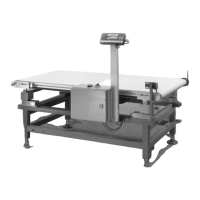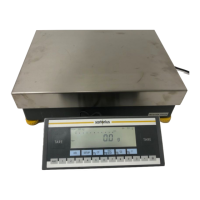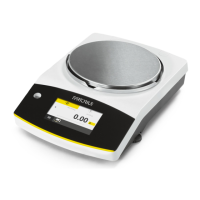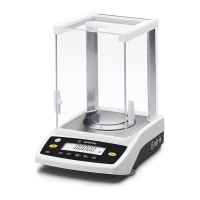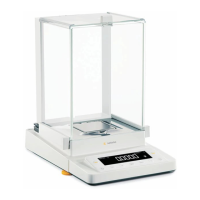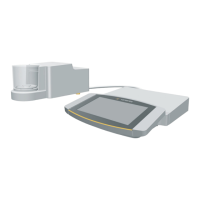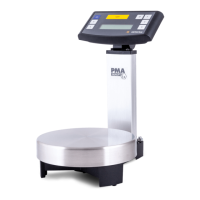Weigh Cell Operating Instructions 31
Operation
8 Operation
8.1 Notes on “Analytical Weighing”
with Weigh Cells
8.1.1 Handling of Samples and Vessels
The sample should be acclimatized to the temperature
of the weigh cell.
This is the only way to avoid measurement errors caused
by air buoyancy and fluctuations resulting from
convection currents across the surface of the sample.
These negative effects increase as the volume and/or
surface area of the sample increases. For this reason, the
size of the tare container should be appropriate for the
sample.
Samples and vessels for weighing should not be
touched by the operator’s hands. since the hygroscopic
effect of fingerprints and the effect of the hand’s
temperature can influence the measurement results.
The sample must be applied carefully, e.g., manually
using tweezers or automatically via a robot or a filling
system.
When designing a draft shield device, steps must be
taken to keep the increase in temperature within the
weighing chamber to a minimum (e.g., using a bypass).
8.1.2 Weighing Electrostatically Charged
Samples and Vessels
Significant measurement errors may occur when
weighing electrostatically charged objects. This problem
particularly involves samples that have extremely poor
conductivity (glass, plastic, filters) since they can only
discharge electrostatic—i.e., friction-induced—charges
through the weighing pan over a relatively long period
of time.
The result is a force acting between the charge on the
sample and the permanently installed parts of the weigh
cell. This causes the displayed weight value to fluctuate
constantly.
Ionization can be applied to make the air around the
sample conductive. This enables the charge to be
compensated through the air, or discharged through the
ground (grounded).
Aside from purely mechanical solutions (e.g., using a
special weighing pan to shield the sample), bombarding
the sample with ions of opposing polarity to neutralize
the surface charge is one of the most effective methods
for eliminating static electricity. We also supply
corresponding components for installation in systems.
The area around the weigh cell (e.g., plastic parts) can
also contain charges that negatively affect the accuracy
of weighing results. Take appropriate steps (grounding)
when designing draft shield devices.
On the reverse of the
weigh cell mounting
plate, thread M6 (1) is
available for a poten-
tial equalization con-
ductor (e.g., for a
spatula).
t It must be ensured
that the frame is
grounded.
8.1.3 Weighing Magnetic or Magnetizable
Samples
It is technically impossible to avoid using magnetizable
materials for the production of weigh cells. This is
primarily because the operating principle of high-
resolution weigh cells is based on compensation of the
load through magnetic forces.
When weighing magnetic or magnetizable samples or
vessels, interaction between the sample or vessel and
the above-mentioned parts inside the weigh cell may
have a distorting effect on the weighing results.
To keep such effects to a minimum, we recommend
increasing the distance between the sample/container
and the weighing system using a non-magnetic material.
The force is reduced quadratically with the increase in
distance.
Magnetizable/magnetized samples and the weigh cell
interact with magnetic fields and with magnetizable or
magnetized parts in the environment. The system can
be shielded from external magnetic fields to some
extent using (soft magnetic) plates.
1

